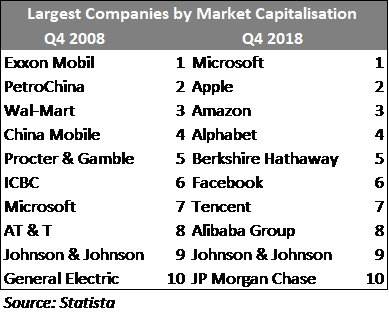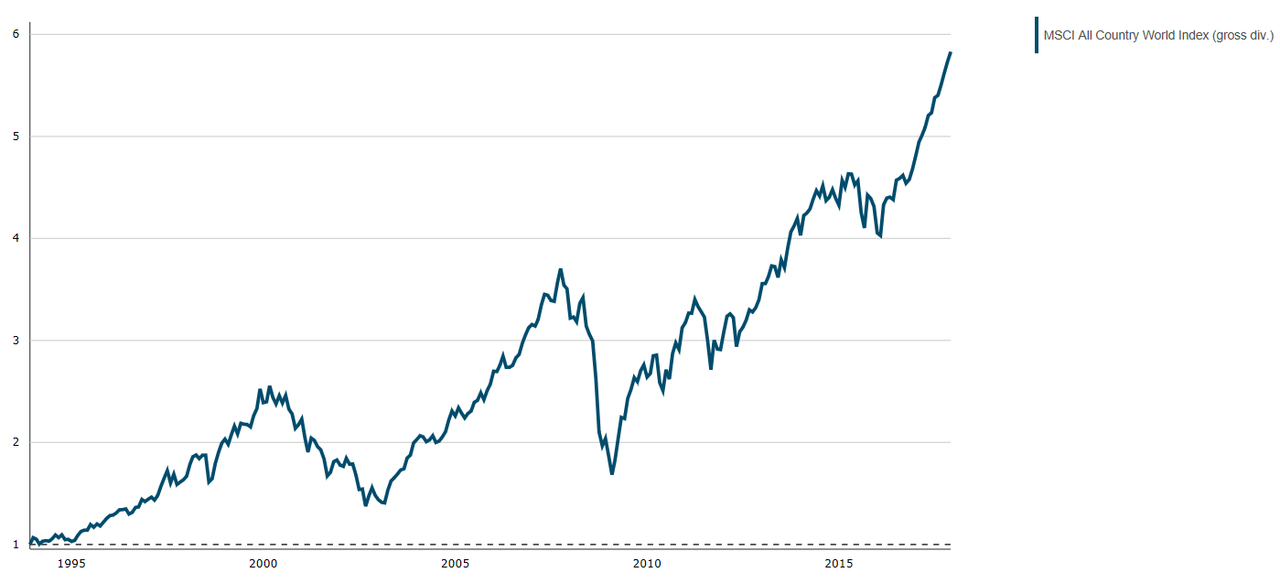How to Pick Winning Investments
There’s no greater feeling than being on the right side of a winning stock. The joy of being ‘right’ and making money in the process is insatiable.
There’s no greater feeling than being on the right side of a winning stock. The joy of being ‘right’ and making money in the process is insatiable. Jason Zweig, in his excellent book, “Your Money and Your Brain” describes how the brain activity of a person that’s making money on their investments is similar to a person who is high on cocaine. It’s that powerful! Picking Winners What are the chances? Market Cap What simple solution should investors implement? MSCI Index
The problem with picking stocks is that it tells us nothing about the future. Companies and industries change on a continual basis, as technology and human creativity move forward.
Similarly, the stock market, which is essentially a collection of businesses, is always changing. An investor in 1910 would have been excited about the choice of car companies they could invest in. By the 1990s, investors’ attention switched to the new economy as characterised by technology companies such as Cisco, Microsoft, and Netscape.
Even over the last decade, the list of the world’s biggest companies has evolved significantly as the fortunes of different industries ebb and flow. Picking tomorrow’s winners is not simply a case of looking at the companies that have been successful in the past.
So, what are your chances of successfully picking winning companies? Not all companies are created equal and a large amount of companies provide mediocre returns at best. In his recent study, Hendrik Bessembinder, a finance professor at Arizona State University, found a minority of companies provide the majority of the returns in the stock market. Mr. Bessembinder estimates that $32 trillion of wealth (returns in excess of Treasury Bills) was created between 1926 and 2015 via approximately 26,000 stocks that have traded on the New York stock exchange, American stock exchange, and the Nasdaq (All US exchanges).
Of these 26,000 stocks, only 86 of the top-performing stocks (less than 0.33%), were collectively responsible for over half of the wealth creation. The most astonishing fact is that just over 4 percent of the companies account for all the wealth created. The other 96% only matched the return of the one-month Treasury Bill – with many of them producing less. This is extraordinary. It demonstrates that if you try to pick stocks, you’re very likely to miss the relatively small number of companies that turn out to be winners.
Investors do better when they apply simple solutions to the complex world of investing. Occam’s Razor is the problem-solving principle which states that simpler solutions are better than solutions that are more complex. If we apply these thoughts to investing, the message is clear; simplicity always beats complexity.
So, what simple solution can an investor implement? Investing in a ‘simple’ globally-diversified equity portfolio will increase the likelihood of having a better investment outcome as you have exposure to all the winners. For example, from 1994-2017, the annual return from an all-World equity index was 8% (see graph below). If you excluded the top 10% of best-performing stocks, your return dropped to 3.6% per annum. If you excluded the top 25% of the best-performing stocks, your return would have been -4.4% per annum. Stock returns are not uniformly distributed- some stocks do well, some not so well, but by remaining diversified you maximise the chance of capturing the returns available from investing in the stock market.
The ‘all stocks’ world index consists of all eligible stocks in the developed and emerging markets. Returns in USD. Diversification does not eliminate the risk of market loss. Past performance is no guarantee of future results. Index data from DFA.
Get in touch or learn more about us
